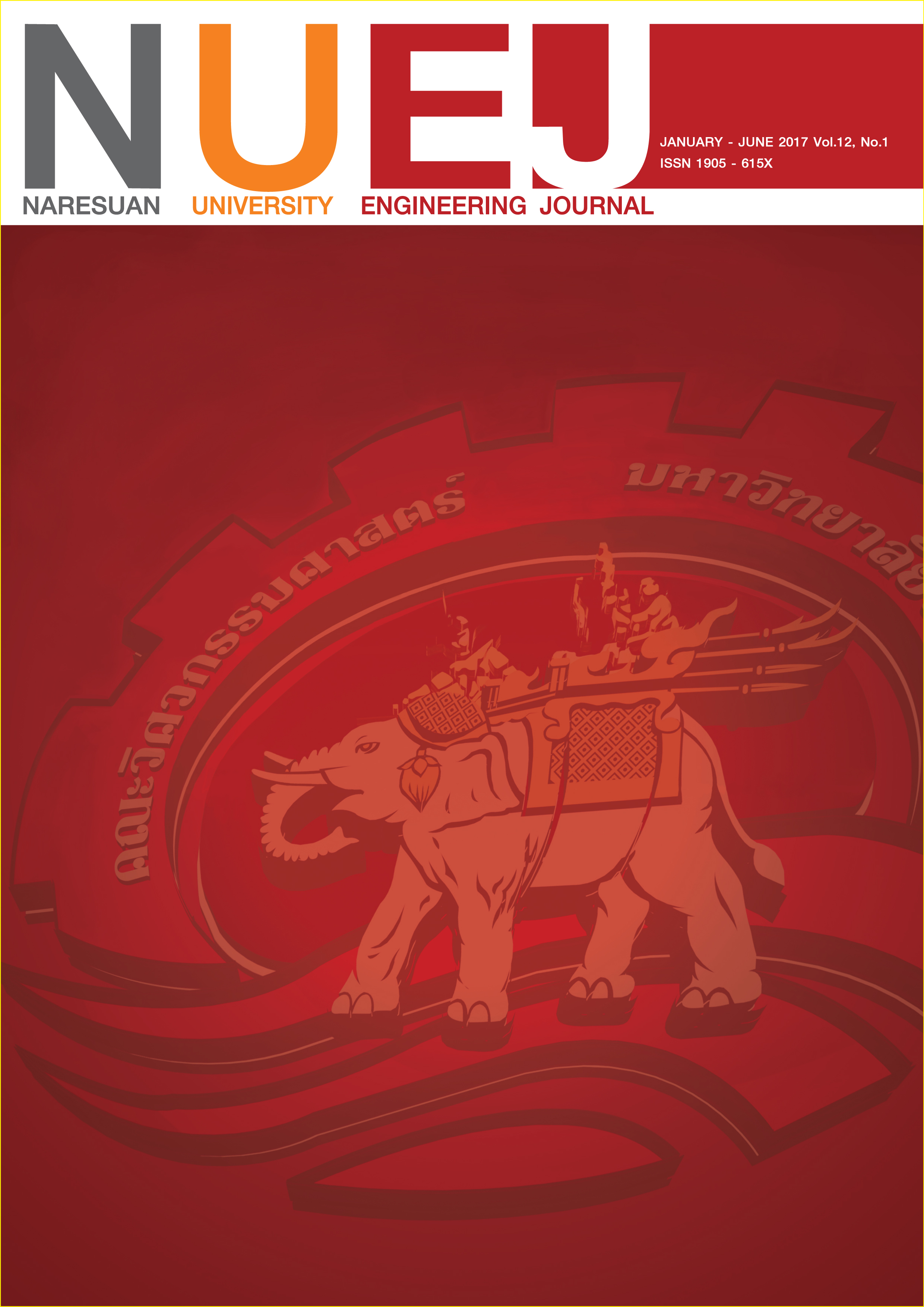Feasibility Study of Friction Stir Welding of Dissimilar Metals between 6063 Aluminium Alloy and Pure Copper
Main Article Content
Abstract
Butt joints of dissimilar metals between 6063 aluminium alloy (Al6063) and commercial pure copper (Cu) were fabricated by friction stir welding (FSW) using the rotational speed of 1100, 1400 and 1800 rpm and welding speed of 20 and 40 mm/min. The effect of rotational and welding speeds in FSW process on surface morphology, microstructure and mechanical properties of dissimilar FSW Al6063–Cu joints was investigated. The experimental results showed that defect–free dissimilar FSW Al6063–Cu joints could be achieved when rotational and welding speeds in FSW process were used as listed follow: 1100 rpm and 20 mm/min, 1400 rpm and 20 mm/min, 1800 rpm and 20 mm/min. Microstructural analysis revealed that a good mixing of Al6063 and Cu metal with lamellar structure was observed. Furthermore, fine Cu metal and Al6063 particles were also found in stir zone (SZ) of the dissimilar FSW Al6063–Cu joints. EDS and XRD results indicated that intermetallic compounds such as AlCu, Al2Cu and Al4Cu9 were formed in SZ of the dissimilar FSW Al6063–Cu joints. High tensile strength of the dissimilar FSW Al6063–Cu joints would significantly result from a large area of SZ in the joints due to using proper welding pitch.
Article Details
References
Simoncinia, M., & Forcellese, A. (2012). Effect of the welding parameters and tool configuration on micro– and macro–mechanical properties of similar and dissimilar FSWed joints in AA5754 and AZ31 thin sheets, Mater. Des 41, 50–60.
Chen, Z. W., Pasang, T., & Qi, Y. (2008). Shear flow and formation of Nugget zone during friction stir welding of aluminium alloy 5083–O, Mater. Sci. Eng., A 474, 312–316.
Xue, P., Ni, D. R., Wang, D., Xiao, B. L., & Ma, Z. Y. (2011). Effect of friction stir welding parameters on the microstructure and mechanical properties of the dissimilar Al–Cu joints. Mater Sci Eng A 528, 4683–4689.
Liu, H. J., Shen, J. J., Zhou, L., Zhao, Y. Q., Liu, C., & Kuang, L.Y. (2011). Microstructural characterisation and mechanical properties of friction stir welded joints of aluminium alloy to copper, Sci. Technol. Weld Joining 16, 92–98.
American Bureau of Shipping (ABS), Guide for the approval of friction stir welding in aluminium, (2011). Google Scholar.
Mubiayi, M. P., & Akinlabi, E. T. (2013). Friction Stir Welding of Dissimilar Materials between Aluminium Alloys and Copper – An Overview, Proceedings of the World Congress on Engineering 2013 Vol III, WCE 2013, July 3 – 5, London, U.K.
Krishnan, K. N. (2002) On the Formation of Onion Rings in Friction Stir Welds, Mater. Sci. Eng., A 327, 246–251.
Elangovan, K., Balasubramanian, V., & Valliappan, M. (2008). Influences of tool pin profile and axial force on the formation of friction stir processing zone in AA6061 aluminium alloy, Int. J. Adv. Manuf. Technol, 38, 285−295.
Cao, X., & Jahazi, M. (2011). Effect of tool rotational speed and probe length on lap joint quality of a friction stir welded magnesium alloy, Mater. Des. 32, 1–11.
Gemme, F., Verreman, Y., Dubourg, L, & Wanjara, P. (2011). Effect of welding parameters on microstructure and mechanical properties of AA7075-T6 friction stir welded joints. Fatigue Fract. Engng. Mater. Struct. 34, 877–886


